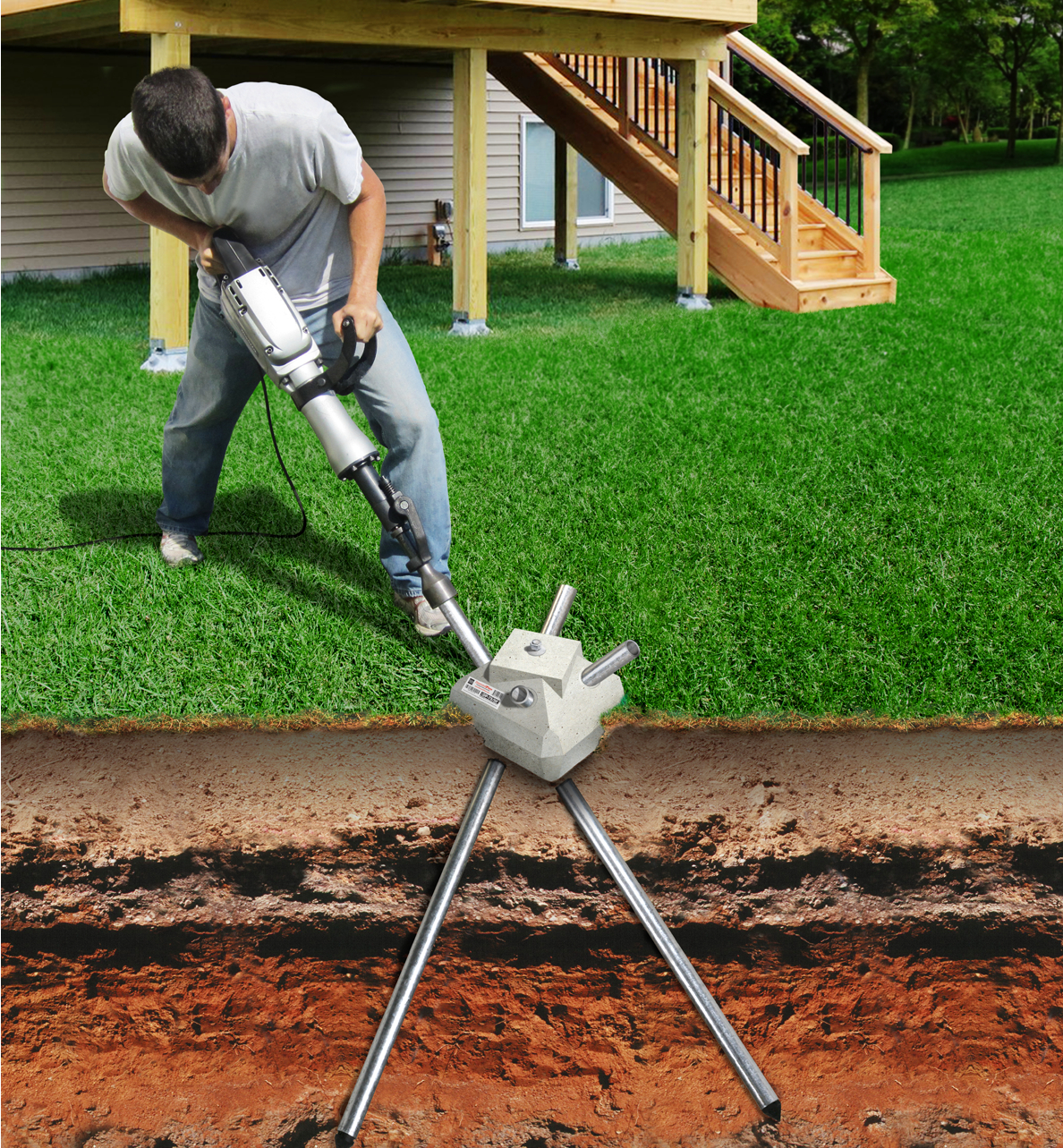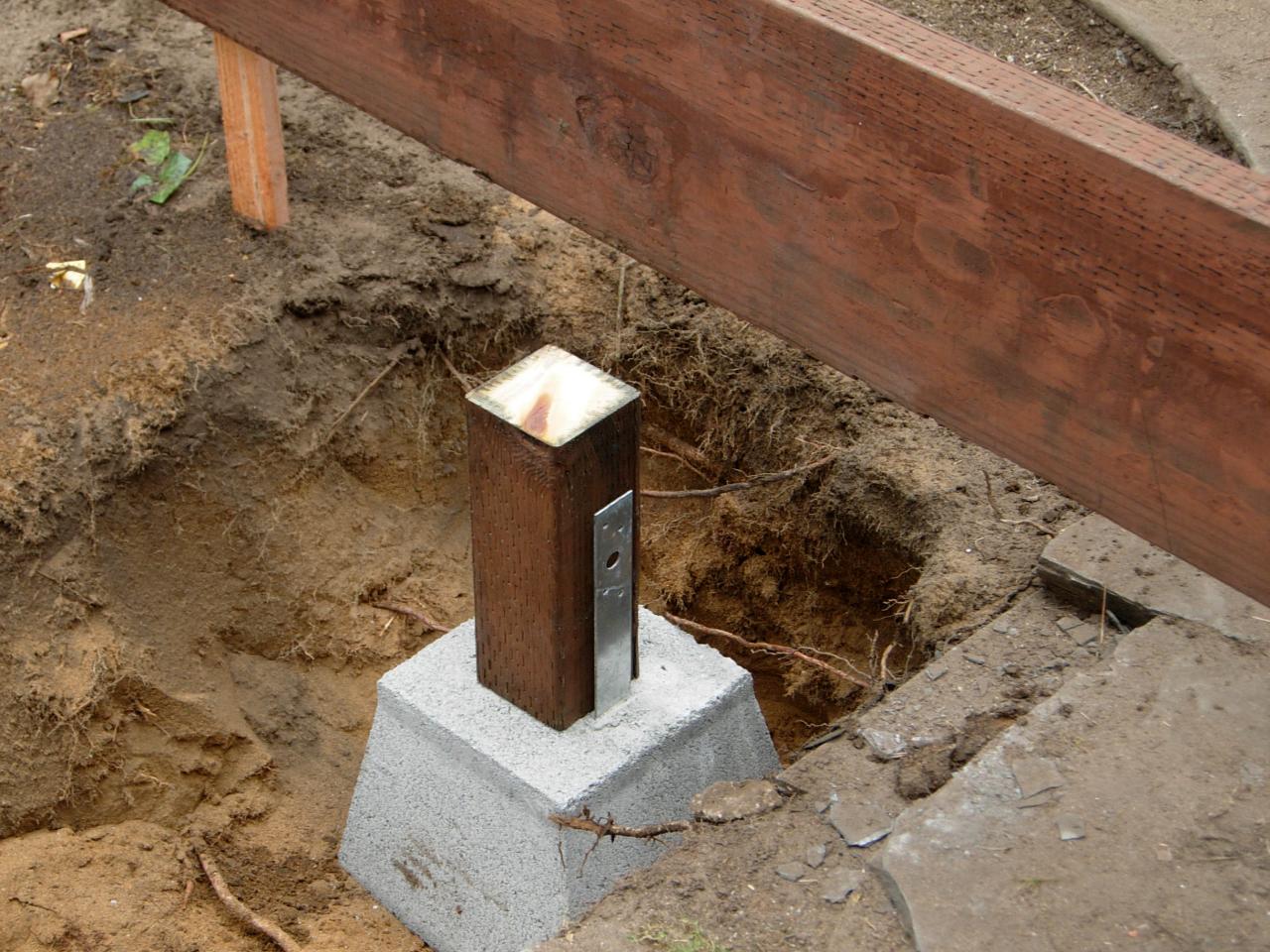Deck Structures 101: Comprehending the Value of Appropriate Deck Footings
Deck Structures 101: Comprehending the Value of Appropriate Deck Footings
Blog Article
Improve Your Deck's Security With Correct Deck Footing: Ensure Lasting Durability and Safety And Security
One vital element that commonly gets neglected is the proper installation of deck footings. These footings offer as the foundation of your deck, giving the essential assistance and stability to endure the test of time. In this conversation, we will explore the significance of appropriate deck ground, overview you through the detailed process of setup, and highlight the value of regular upkeep to maintain your deck's stability.
Why Correct Deck Footing Matters
Correct deck ground is crucial for making sure the security and long-term sturdiness of any deck framework. The deck footing, or structure, serves as the support point for the whole deck, supporting the weight of the structure and moving it to the ground listed below - Deck Footings. Without a solid ground, a deck can become unpredictable, resulting in architectural failing and potential security hazards

In addition, correct deck footing aids to secure against wetness damage. Wetness can leak into the ground and compromise the foundation, causing deteriorating or decay. By using suitable materials and methods for the ground, such as concrete piers or helical piles, the deck can be elevated in the air, decreasing call with moisture and extending its life expectancy.
Recognizing the Influence of Dirt Conditions
The security and resilience of a deck framework can be significantly influenced by the dirt problems in which it is developed. Understanding the effect of dirt problems is essential for making sure the resilient resilience and safety and security of a deck. Different types of dirt have varying load-bearing capacities, water drainage abilities, and development and contraction properties, which can all impact the stability of the deck.
One important aspect to think about is the soil's bearing capability, which refers to its capacity to support the weight of the deck and any added tons. Soils with high bearing abilities, such as compacted crushed rock or clay, are optimal for supporting hefty structures like decks. On the various other hand, soils with reduced bearing abilities, such as loosened sand or soft clay, might need extra measures to enhance stability, such as deep footings or soil stabilization methods.

Furthermore, the dirt's propensity to get and expand with adjustments in dampness material can affect the stability of the deck. Dirts with high clay material are vulnerable to substantial expansion and contraction, which can lead to changing and working out of the deck structure. Proper measures, such as mounting dampness obstacles or utilizing alternate structure systems, might be called for to reduce the impacts of soil motion.
Choosing the Right Ground Materials
What elements should be thought about when choosing the appropriate footing products for a deck? Picking the appropriate ground materials is important for ensuring the stability and longevity of a deck. Numerous elements require to be taken into consideration when making this decision.
To start with, the kind of dirt in the location plays a critical function in figuring out the informative post appropriate ground products. Different soils have differing load-bearing capacities, so it is essential to select materials that can properly support the weight of the deck and any type of prospective loads it might birth.
Secondly, the climate and climate problems of the region must be considered. In locations with severe winter seasons or high levels of moisture, footing products that are immune to rust and decay, such as concrete or treated timber, are recommended. These materials are extra sturdy and much less prone to damage from freezing temperatures, wetness, and pests.
In addition, the dimension and elevation of the deck likewise influence the selection of footing materials. Larger and taller decks need even more considerable footings to ensure stability and avoid moving or sinking. In such cases, materials like concrete footings or helical piers might be better.
Finally, spending plan considerations should not be forgotten. While some materials may offer superior toughness and efficiency, they might likewise feature a higher price. It is important to strike an equilibrium in between cost and top quality when picking the proper ground products for a deck.
Step-by-Step Guide to Installing Deck Footings
When setting up deck grounds, it is essential to adhere to a step-by-step guide to ensure stability and longevity. By adhering to these actions, you can make certain that your deck will certainly have the ability to withstand the test of time and provide a pleasurable and risk-free outside area for several years ahead.
The very first step in installing deck footings is to figure out the place and design of your deck. This consists of measuring and noting the location where the footings will be put. It is very important to make certain that the grounds are evenly spaced and lined up with the deck's design.
Following, you will certainly require to dig the holes for the footings. The depth and diameter of the openings will depend upon the dimension and weight of your deck. It is essential to dig the openings deep enough to get to listed below the frost line to stop frost heave.
Once the holes are dug, you can start putting the concrete grounds. It is recommended to use a pre-mixed concrete mix for this action. Load the openings with concrete, ensuring that it is level and smooth. Use an article level to guarantee that the grounds are plumb.
After the footings have actually been put, allow the concrete to cure for a minimum of 2 days before proceeding with the deck installation. This will ensure useful source that the grounds have actually hardened and prepare to support the weight of the deck.
Normal Maintenance to Preserve Deck Stability
To maintain the security of your deck, normal maintenance is important. By executing a regular upkeep schedule, you can make sure that your deck continues to be secure, long lasting, and visually attractive. One essential element of upkeep is checking the deck for any signs of damages or wear. This consists of checking for damaged or loosened boards, rusted screws find out or nails, and any indications of rot or decay. It is necessary to address these issues promptly to avoid additional damages and potential safety and security risks.
Cleaning your deck on a regular basis is an additional crucial upkeep job. Gradually, mold and mildew, dust, and particles can collect externally of the deck, bring about a unsafe and unpleasant look. Making use of a light detergent and a rigid brush or power washer, you can effectively get rid of these contaminants and bring back the deck's original appeal. Additionally, on a regular basis applying a protective sealant can aid prevent wetness damage and extend the life of your deck.
In addition to these normal maintenance tasks, it is likewise recommended to carry out a thorough examination of the deck's structural components at the very least yearly. This includes inspecting the problem of the footings, beams, articles, and joists. Any type of signs of degeneration or weakness must be dealt with without delay to guarantee the continued stability and security of the deck.
Verdict
In verdict, correct deck footing is crucial for ensuring the durable resilience and safety of your deck. By complying with a step-by-step guide to installing deck footings and regularly preserving them, you can enhance your deck's stability.
In this conversation, we will certainly explore the relevance of proper deck footing, guide you with the step-by-step process of installment, and highlight the value of regular upkeep to maintain your deck's stability.
Correct deck ground is crucial for making sure the security and lasting longevity of any kind of deck structure.One of the key factors why correct deck footing matters is to prevent the deck from shifting or sinking over time (Deck Footings).In conclusion, appropriate deck footing is vital for guaranteeing the durable durability and safety of your deck. By following a step-by-step guide to setting up deck footings and regularly preserving them, you can boost your deck's security
Report this page